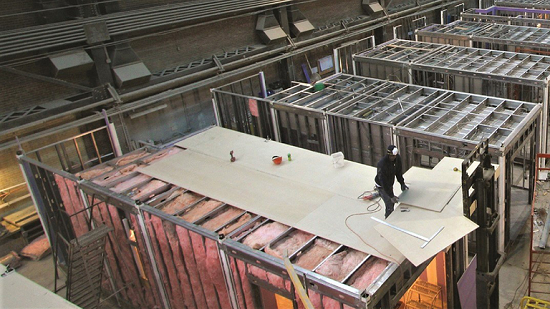 Wednesday, April 24, 2024
Wednesday, April 24, 2024  Wednesday, April 24, 2024
Wednesday, April 24, 2024 
Anyone who’s been on a construction site knows that traditional construction methods are inefficient, time-consuming and costly. At each step, productivity is lost as crews wait for each other before they can move on to the next level. Delays caused by miscommunication — either on the jobsite or in the design process — routinely throw off the construction schedule, which costs time and money.
For such reasons, some in the plumbing and mechanical industry have long been proponents of prefabrication and modular construction. Now, however, the time to shift to off-site manufacturing-style production on a large scale finally seems at hand.
“While modular (or prefabricated) construction is not a new concept, it is attracting a fresh wave of interest and investment on the back of changes in the technological and economic environment,” stated a 2019 report from management consulting firm McKinsey & Co. “Recent modular projects have already established a solid track record of accelerating project timelines by 20 to 50%.”
Entitled “Modular Construction: From Projects to Products,” the report also noted the construction method can cut project costs by 20%. In this sense, modular refers to three-dimensional volumetric building components comprising entire buildings.
“The primary advantage is the speed of the construction and quicker occupancy for the owner or the end-user,” says Tom Hardiman, executive director of the Modular Building Institute, a post he’s held since 2004. “That’s the big driver, why it’s gaining so much traction with multifamily developers, with hotel and hospitality developers. They can generate revenue much quicker.”
On a conventional, site-built project, the carpenters come in first, then the electricians, then the plumbers and HVAC techs, then the drywallers, then the painter, and then the tiler. “It’s all very sequential,” Hardiman explains. “In a factory, all those trades are there and working together. When that box, that room, comes out of the factory, it could be 80% complete. Electric, plumbing, paint, carpet, drywall, everything.”
Construction Links Network – the peer-to-peer content sharing platform for the construction, building and design community